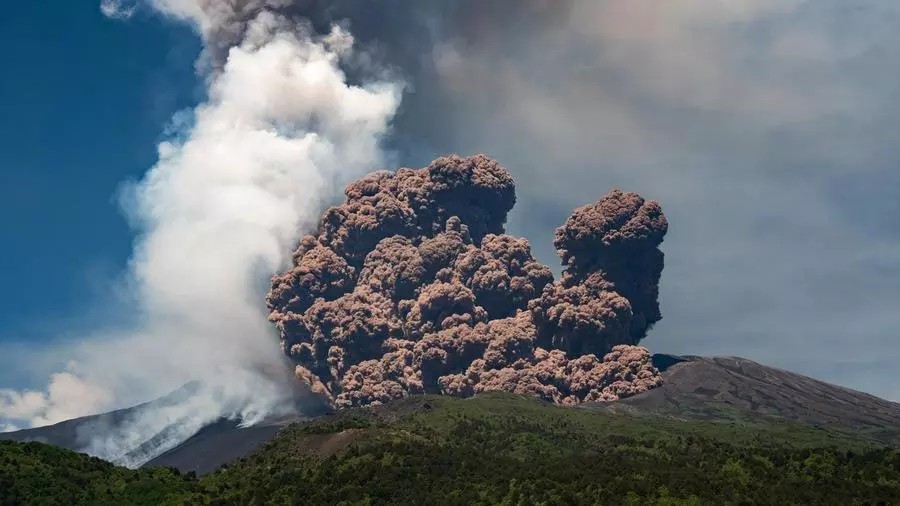Mount Etna, Europe’s most active volcano, erupted Monday morning 2nd June 2025, releasing thick plumes of ash and smoke high into the sky above the Italian island of Sicily.
Dramatic footage from the area showed volcanic material spewing from the mountain, as a series of increasingly powerful explosions were recorded by Italy’s National Institute of Geophysics and Volcanology (INGV). The eruption began in the early hours and appears to have originated from a known vent on the southeastern slope.
Despite the intensity of the eruption, there has been minimal disruption. Both Catania and Palermo airports remain open, with flights operating as usual.
Geologists monitoring the volcano say the eruption may have been triggered by a partial collapse within the crater, sending a fast-moving cloud of ash, gas, and volcanic rock — known as a pyroclastic flow — down the mountain’s side. So far, the volcanic material has not moved beyond the Valley of the Lion, a common stopping point for tourist excursions near the summit.
INGV first noticed signs of volcanic activity around 12:39 a.m. local time. The eruption has been classified as “Strombolian” — a type of eruption that features brief, explosive bursts caused by gas building up in the magma. These bursts can shoot ash and debris into the air and pose risks for aviation.
While a red alert was reportedly issued earlier in the day, it was later downgraded, and there have been no flight cancellations.
Etna’s last significant eruption occurred in February, when ash clouds forced flight diversions and prompted warnings to tourists. Eruptions on Mount Etna are relatively common, but they rarely result in serious damage or injury.
Authorities continue to monitor the volcano closely, but no immediate danger has been reported.



